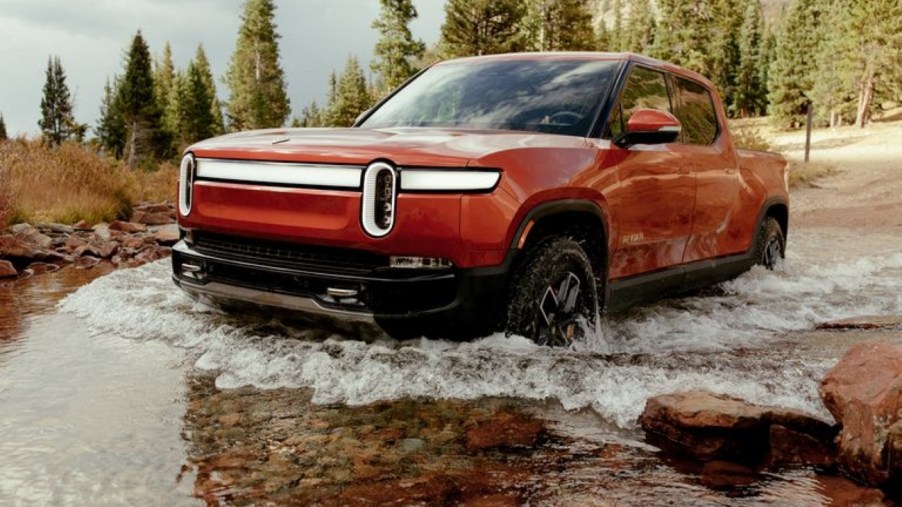
Rivian Air Suspension Raises and Lowers Height of R1T and R1S
Rivian leaped in the consciousness of automotive and outdoor enthusiasts alike with the highly-anticipated R1T electric truck and R1S electric SUV. Both of these vehicles boast incredible specs, off-road prowess, and many unique features. This includes an adjustable air suspension that can raise and lower the height. Read more to find out how it works.
Benefits of the Rivian R1T and R1S adjustable air suspension

The Rivian R1T and R1S have an adjustable air suspension — or an independent air suspension, as Rivian calls it. The independent air suspension enables you to raise or lower the height of the R1T and R1S. The change in height varies by 6.5 inches, ranging from a ground clearance of 7.9 to 14.9 inches.
Why would you want to change the height of your vehicle? By changing the height of the vehicle, the air suspension adjusts for different situations for improved stability, handling, aerodynamics, comfort, off-road performance, efficiency, electric range, and storing cargo.
If you want to load your gear, it’s best to lower the Rivian R1T and R1S down to 7.9 inches. The lower height makes it easier to lift up items into the vehicle. Conversely, you’ll want to raise the R1T and R1S to a maximum ground clearance of 14.9 for off-road use. With a higher ground clearance, you’ll be able to drive over rough terrain more effectively and safely. For on-road driving, it’s better to have a lower ride height to improve aerodynamics, efficiency, and electric range.
How the Rivian R1T and R1S adjustable air suspension works

The term adjustable air suspension sounds like something from a science fiction novel or movie — as if a car rides on a cloud. However, there is a mechanical explanation for how air suspensions work for the Rivian R1T and R1S.
Instead of leaf springs or coil springs in a traditional suspension, an air suspension has pressurized flexible rubber bellows — or air springs. Each corner of the R1T and R1S has air springs, and the vehicle monitors the air springs for ride height and air pressure. By using an onboard compressor, an air reservoir, and an air dryer, the R1T and R1S can adjust the ride height and air pressure according to different situations, such as off-road use and cargo loading.
Are there any disadvantages of an air suspension?
While there are many advantages of an air suspension, there are some disadvantages as well. For one, air suspensions are more expensive than traditional coil spring and leaf spring suspensions. It’s not clear how much the air suspension adds to the cost of a Rivian R1T or R1S. However, as detailed by MotorTrend, an air suspension upgrade for the Volvo XC90 adds an additional $1,800. Also, the cost to repair an air suspension is higher than a traditional suspension.
Another drawback of air suspensions is “What happens when an air suspension fails on an older used vehicle?” While a coil spring or leaf spring suspension will gradually degrade over time, the concern is that an air spring suspension could suddenly fail. This is not to say that this will be a problem with the R1T and R1S, but it’s something to consider.
Overall, though, the independent air suspension for the Rivian R1T and R1S is a brilliant engineering feat. While other luxury vehicles have adjustable air suspensions, Rivian perfected this technology, particularly with a considerable amount of variance in ride height.


